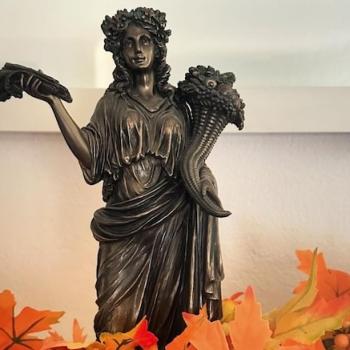I have been drinking and enjoying Scotch for over ten years. I was first truly introduced to Scotch by my friends, Michael, Chip, and Jeff who for several years hosted a monthly podcast on Scotch known as The Scotchcast. Because they didn’t know any better, they had me on as a guest a couple of times, and then quickly realized that my wife Ari is far more knowledgeable about Scotch, and far more interesting! After a couple of appearances on the show we began (very slowly) building up our own Scotch collection, starting with well known brands such as Macallen and Oban, before moving on to more exotic (but not necessarily more expensive!) brands.
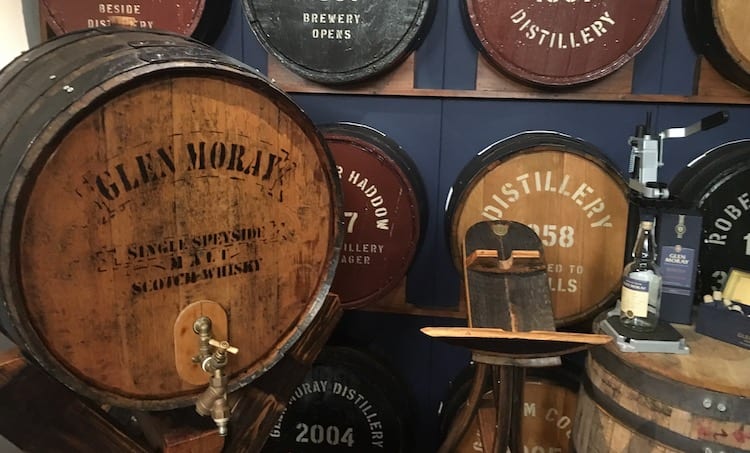
When encountering online discussions about Scotch and other whiskies (and Scotch is just a type of whisky*) I’m often surprised how little people actually know about Scotch. Scotch is not necessarily exotic, it’s just a name for whisky that comes from Scotland, that’s been aged in an oak barrel for at least three years. There are a couple of other requirements in there too, but it’s really about location, age, and how the spirit is aged.
There are several categories of Scotch, and the term we hear and read the most in the United States is “single malt.” A single malt Scotch is a Scotch made from malted barley and water at one specific distillery; Scotch made from a grain (such as wheat, corn, or rye) and water at specific location is a “single grain” Scotch. The most common Scotches are blended Scotches, which can use whiskies from several different facilities. Blended Scotch is often frowned on, but the most well-known Scotches in the world are blended ones. Most people are familiar with Johnny Walker or Chivas Regal even if they’ve never had either.
Many Scotches come with an age statement. Age does not mean something is good or bad, it’s only an indication of the youngest spirit in your bottle. A Glenfiddich 15 for example, makes use of whisky that has been in a barrel for at least 15 years. That fifteen year old whisky might also be mixed with older barrels to achieve the taste most people associate with a Glenfiddich 15. The “15” then is the minimum age of any Scotch used to make that expression. Once a Scotch has been removed from the barrel and placed in a glass bottle it is done aging. Just because you have an old bottle of Glen Grant bottled in 1980 doesn’t suddenly mean you suddenly have a bottle of fifty old Scotch. If the label says “12” it’s still a 12 year old Scotch (though it might be worth a lot if unopened because whiskies, like wine, often appreciate in value).
The majority of a whisky’s flavor comes from the barrel it ages in. The notes of caramel, vanilla, chocolate, and strawberries that are often a part of the Scotch experience almost all come from the barrel. Barrels can be made of virgin oak, but most have previously contained something in them. That something is most often bourbon, which is American whisky made from corn. Corn whiskies are generally sweeter than their cousins made from barely, and that sweetness is absorbed by the barrel, and then ultimately the spirit that is put in them (in this case Scotch). Barrels that have housed wine are often used in Scotch production too, I’m a huge fan of sherry casks for instance.
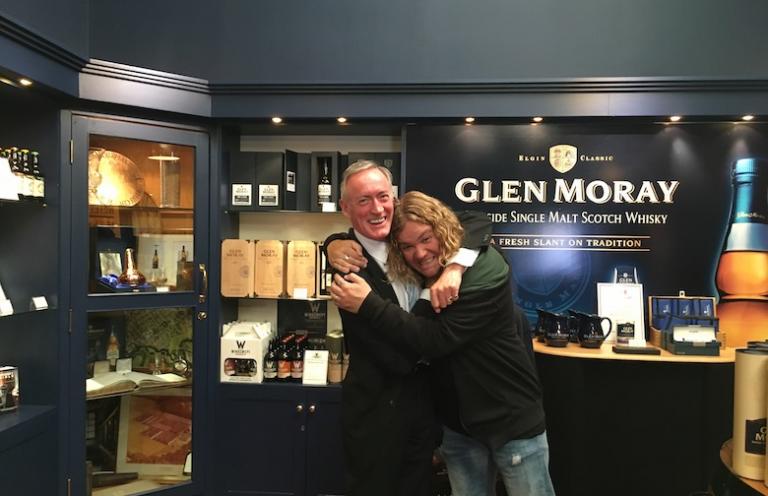
Why do Scotch whiskies utilize oak barrels from other countries? Generally because Scotland is a little short on oak trees these days. Also, doesn’t it make sense to recycle? Most barrels today originate from the United States and France, though they could conceivably come from anywhere in the world (as long as the wood used is oak).
Many people suffer under the delusion that most Scotch tastes like “burning” or a “campfire.” This comes from people believing that all Scotch is “peated.” When a Scotch is peated, the barley used to make make the Scotch is dried with peat smoke. The smell and taste of peat then stays with the barely through the distilling process and ultimately the spirit’s time in the barrel. Most Scotches are not peated, but yes, peat does have a smoky flavor to it, and it can taste like a campfire. (Peat is akin to sod, though with rotting plants in it.) I generally find the taste of peated Scotches pleasant, though I know that they aren’t for everybody.
Scotch has a reputation as an “expensive” spirit, and that’s not entirely false. A good bottle of Scotch is going to cost you more than fifteen bucks, but great Scotches can be had for as little as thirty dollars a bottle! And considering most of us don’t go through an entire bottle of Scotch in one evening, thirty dollars for a year’s worth of memories is a pretty good deal. What follows are some of my favorite Scotches (and a few other whiskies) by price point (prices quoted are what I pay in California, liquor prices do vary state to state and country to country).
Whisky is sometimes called the “water of life,” and while that might be a bit of an exaggeration, enjoying whisky is a fine hobby (in moderation) and an excellent way to spend an evening!
THIRTY DOLLARS OR SO AND UNDER
Scotch doesn’t have to cost a fortune, and the expressions I drink most often generally run under thirty dollars a bottle! People assume that great Scotch starts at fifty bucks, and that’s just not true. All of the spirits below are reasonably priced, and I think are much better than many Scotches that cost two or three times as much.
GLEN MORAY is my absolute favorite distillery. They make a quality spirit at a great price point, and do some really awesome experiments too! Their Elgin Classic expression is light and fruity and starts at about twenty six dollars American. A little more full bodied is the Glen Moray 12, and it will only cost you another five dollars. I told you this was a great distillery.
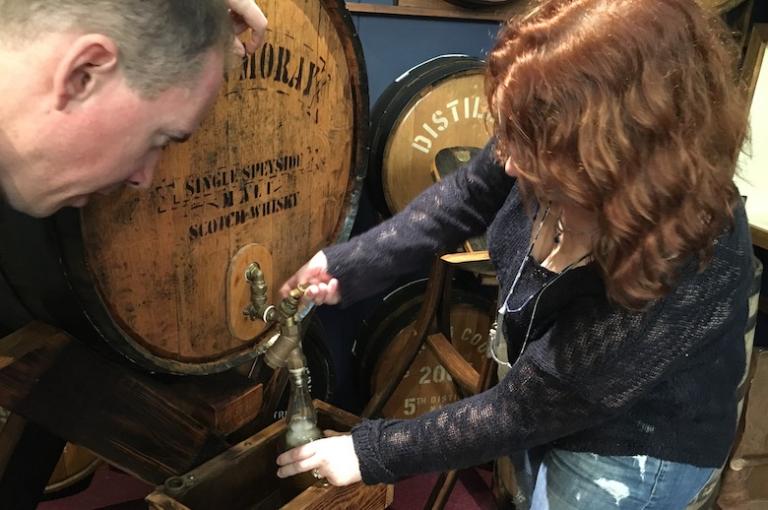
Perhaps the most delicious thing I’ve ever tasted came from an Oloroso-Sherry cask at the TOMATIN distillery back in 2016. Though that’s not available for thirty bucks or less there is the Tomatin 12 for twenty-five dollars. The Tomatin 12 carries a whiff of peat, but just enough to make it interesting. Want to avoid the peat? Try the Tomatin Dualchas for just a few dollars more.
When I go to whisky tastings frequented by people who know very little about whisky, there will always be someone there with a bottle of THE GLENLIVET 12 year (about twenty-five dollars or so). I assume that’s because it sounds very Scottish, it’s a brand that people have heard of, and contains an age statement. The Glenlivet 12 has always had far too much of an alcohol taste for me (despite some rather high rankings from people who know more than me), so imagine my surprise when I was absolutely enchanted one Florida evening by a bottle of The Glenlivet Founder’s Reserve (thirty dollars or so). While drinking the Founder’s Reserve for the first time I assumed it was a fifty dollar bottle of Scotch, and was pleasantly surprised to find it several months later for about 24 dollars (it’s gone up a little in price since then). It’s fruity, without being sweet, and you can taste the oak in there too, this has become one of my go to bottles along with Glen Moray’s Elgin Classic.
Other Options:
Glefiddich 12 ($26)
Glenmorangie Original ($25)
Monkey Shoulder Blended Scotch ($26)
Grangestone Sherry Finish & Grangestone Rum Finish ($29)
SIXTY DOLLARS OR SO AND UNDER
Most expressions from THE SINGLETON come in a tall flatish bottle, making them instant conversation pieces and unique looking. Thankfully the Scotch in them is just as interesting as the bottle. Upon my introduction to the Singleton Glendulan 12 I was rather sure I was drinking an exotic, expensive, hard to find spirit. Instead this spirit retails for about 42 dollars and with flavors of fruit and vanilla.
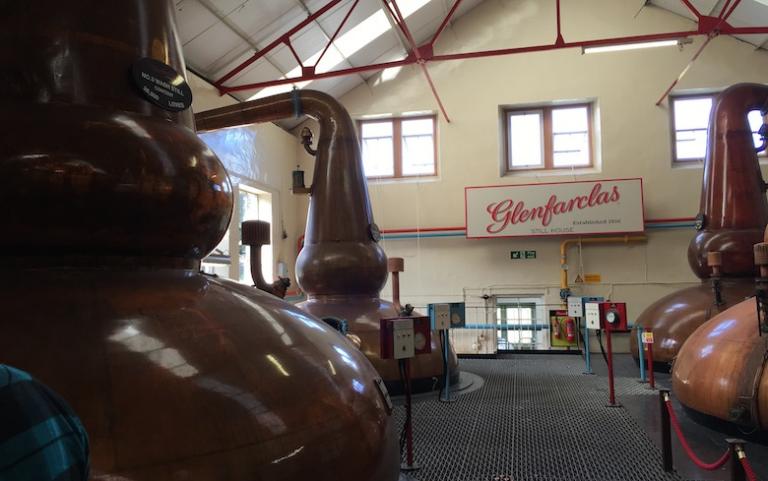
Most Scotches from the region of known as Speyside (named after the river Spey) don’t contain much peat flavor, but the Glenfarclas 10 Year (39 bucks) has a hint of smoke to go along with its sweeter and softer flavors. GLENFARCLAS was also the first extensive stop Ari and I toured on a Whisky tasting expedition in 2016.
I opened this article with a mention of GLENFIDDICH, and for good reason, for many years they were one of my favorite distilleries. My first favorite expression was the Glenfiddich 15, which for whatever reason is heads and tails better than the distilleries 12 and 18 year old offerings. (Sometimes you just find a sweet spot.) Lately I’ve been loving the Glenfiddich Fire and Cane, a peated Scotch finished in bourbon barrels and then rum casks (you can change barrels during the aging process!) adding a sweet flavor to the spirit.
As mentioned earlier blended Scotch has a bad reputation in the United States, but it shouldn’t, especially when it’s as good as SIA. Not only is Sia absolutely delicious (especially since it’s under 50 dollars a bottle), it’s also the first successfully crowd-funded Scotch, and the first blended Scotch whisky company to be started by a woman. Even cooler for me, founder Carin Luna-Ostaseski’s company is right up the road from me in San Francisco. This has become one of my “go to” bottles and is usually in stock at our house.

MACALLAN is one of the most well known distilleries in the world, and while I think their product is often extremely over priced, they make a fine Scotch. No Scotch library is complete without at least a bottle of the Macallan 12, which is finished in sherry barrels made of French Oak. Because of the sherry you can expect a spicy and fruity flavor. The Macallan 12 Yr Double Cask (only 35 dollars) uses barrels made from both French and American oak, making it a fine conversation piece.
Another go to in my house (and a recent birthday gift) is the Balvenie 14 Yr Caribbean Cask (about 60 dollars). What makes this whisky so fabulous is that it’s finished in barrels that have previously held rum! Scotch finished in rum barrels is not hard to find, but it’s not super common either, and this expression from BALVENIE is a perfect example of this finish. Highly recommended!

The coolest bottle in all of the Scotch world (my opinion) comes from the Dalmore Distillery. The stag’s head on every bottle of a Dalmore expression aren’t painted on either, they are actual ornamental antlers. When it was announced that they would be discontinued in future bottlings because of cost there was an outcry from the Scotch community so they stayed (even if they add a few dollars to each bottle). Dalmore as a general rule is a bit more on the pricey side, but luckily for us their least expensive expression is also my favorite. The Dalmore 12 is about 65 dollars and exceptionally smooth. Not surprisingly the Dalmore 12 is finished in sherry barrels.
ADVANCED STUDIES-70 DOLLARS AND UP
My wife’s favorite Scotch is probably the Victoriana from GLEN SCOTIA, an exquisite offering from the mostly unknown Scotch producing region of Campbeltown. Campbeltown was once a major distillery hotspot, but was mostly known for the cheap whisky it shipped to the United States during our (stupid) period of Prohibition. In recent years three distilleries: SPRING BANK, GLEN SCOTIA, and GLENGYLE, have revitalized Campbeltown as a whisky producing area, and all three are among my favorite distilleries. My wife describes the Victoriana as “smooth burnt caramel heaviness, and then a sea salt breeze wafts by leaving the tiniest hint of smoke.” Victoriana is not exotic, and should run you about 75 dollars in the States, though many retail outlets will charge much more for it.
My wife and I love the Victoriana so much we bought a cask strength bottle of this fine spirit. “Cask Strength” means that no water has been added to the spirit, so cask strength whiskies are “hotter” than standard fare because they have more alcohol in them. (Most bottled whiskies are about 46% percent alcohol, cask strength whiskies are usually in the mid 50’s, the Victoriana Cask Strength is 54.8%.) Sadly though, this has to be ordered from the UK, and while the 75 dollar bottle price isn’t awful, the shipping and tariffs will add another 50 bucks or so. Ouch!

Before the Victoriana, Ari’s favorite Scotch was probably OBAN, one of the most well known and easy to find Scotches in the United States. The Oban 14 (just generally referred to as “Oban” by most Scotch drinkers) is common for a good reason, it’s an excellent spirit. It has a fruity sweetness to it, and finished with just a touch of smoke on the back of the tongue. In California I can get Oban for as little as sixty bucks, but in the Midwest it was generally about 70 dollars, and for many many years was the most expensive spirit in our liquor cabinet.
Also about seventy dollars is the best example of a peaty Scotch easily found in the US market. Lagavulin 16 has a strong peat flavor, but has no burn or heat to it in the mouth, and is exceptionally smooth. This is a must for every well balanced Scotch collection. For whatever reason, Lagavulin’s 16 is the distilleries sweet spot, it’s better than both their older and younger expressions, with one exception. Produced by LAGAVULIN, the HOUSE LANNISTER 8 year old Scotch is nearly as good, and at a similar price point. Other than Tyrion, it’s the best thing to come from House Lannister.

If you’ve seen the Game of Thrones line of Scotches, I’ll let you in on a little secret, most of them aren’t very good, which is why I only recommend the House Lannister from Lagavulin and the NIGHT’s WATCH from Oban. When the Night’s Watch was released it was nearly impossible to find last year, but a recent re-release has made it much easier to get ahold of (the disappointing ending to the series probably helped to) at a reasonable price point, about 70 bucks or so.
GLENMORANGIE is conducting some fine experiments whisky experiments, and the most interesting of those is the Alta which utilizes wild yeast from outside the Glenmorangie distillery in the production of this fine spirit. THe result is a whisky with hints of burnt vanilla wafer sweetness-exquisite! One of the best Scotches I’ve ever had. The Alta will run you about 125 dollars, a price point not for the faint of wallet. Even more expensive is the Signet, which honest to gods actually tastes like chocolate. This is a special event Scotch for sure! The price point for the Signet is even steeper, we paid about 215 for our bottle, though prices for this spirit vary from 180 to 250 dollars.
I’ve mentioned TOMATIN in this piece already, but they are worth revisiting for their 18 year old expression. Finished in Spanish oak Oloroso sherry butts (a butt is a unit of measure, equivalent to two hogsheads, or 130 American gallons) this is my favorite dessert Scotch and the closest I’ve ever gotten to approximating the one I bottled myself at their distillery in 2016. This spirit runs about 100 dollars.
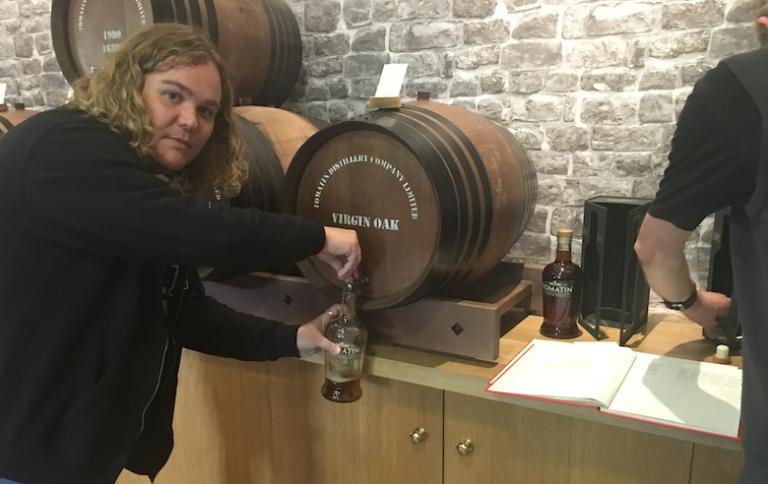
This list only really scratches the surface of Scotch, and I’ve left a whole lot of favorites off fo this list. If you decide to get into Scotch, trust your pallet, and drink what you like! The only opinion that matters is your own! Be sure to pick up a few bottles before Trump’s idiotic tariffs raise the price of each bottle by several dollars.
*Whisky can be spelled both with and without an “e.” Whisky without the e is the Scottish spelling, and whiskey with the e is the Irish spelling. How one spells whisky can tell you a lot about someone’s favorite spirit is.
Due to the length and complexity of this piece, it took me over a year to write so I can’t promise you that all of the price estimates are accurate as of 2019!











